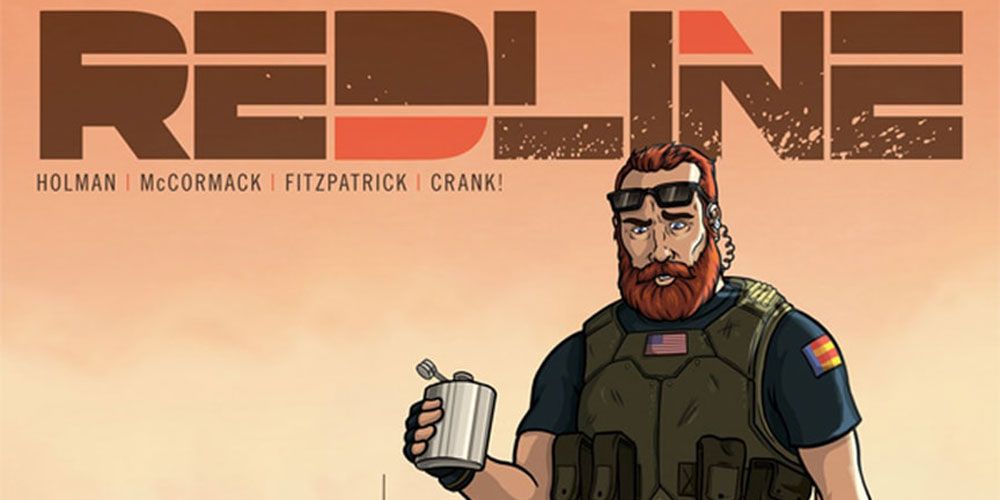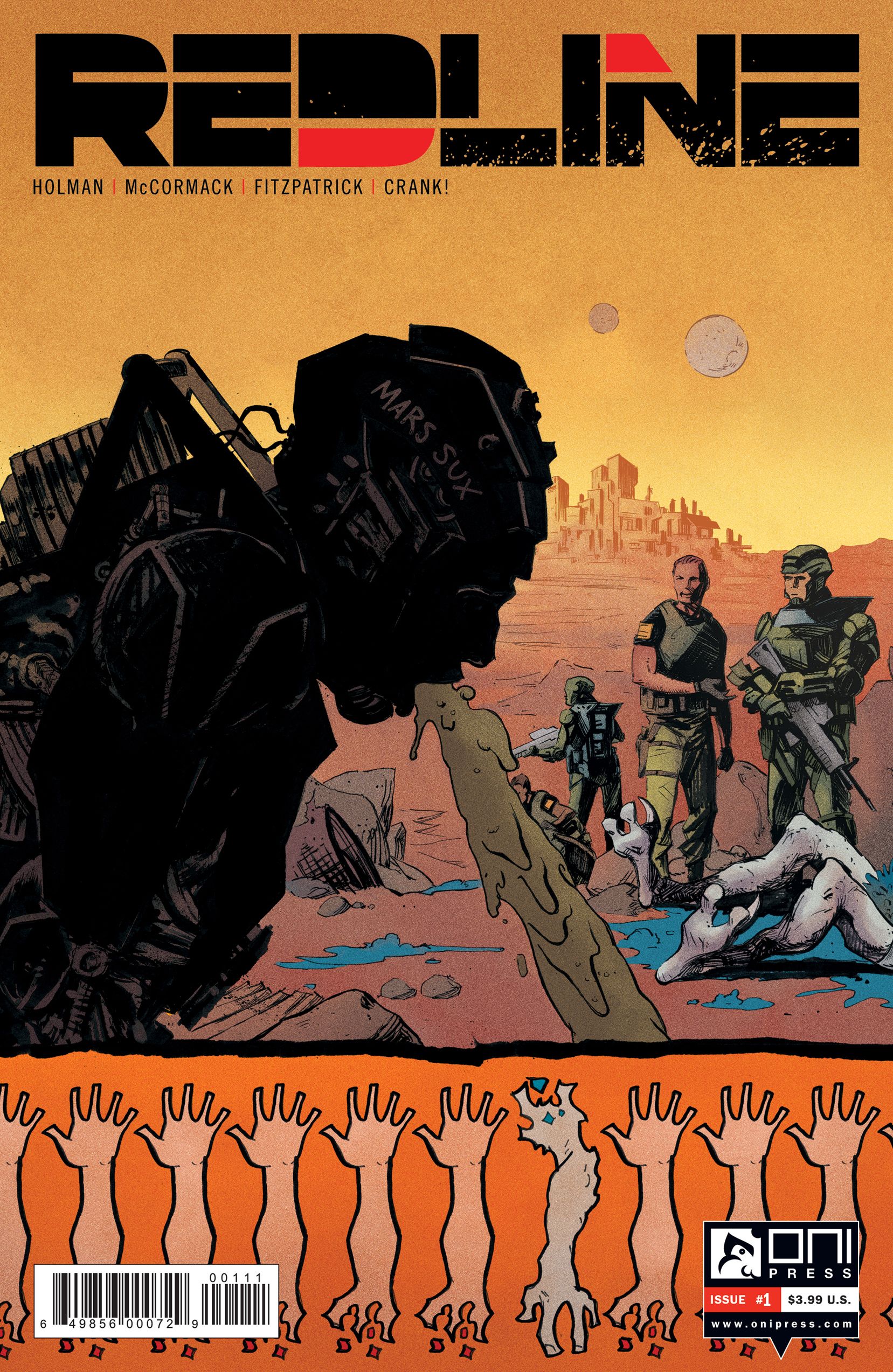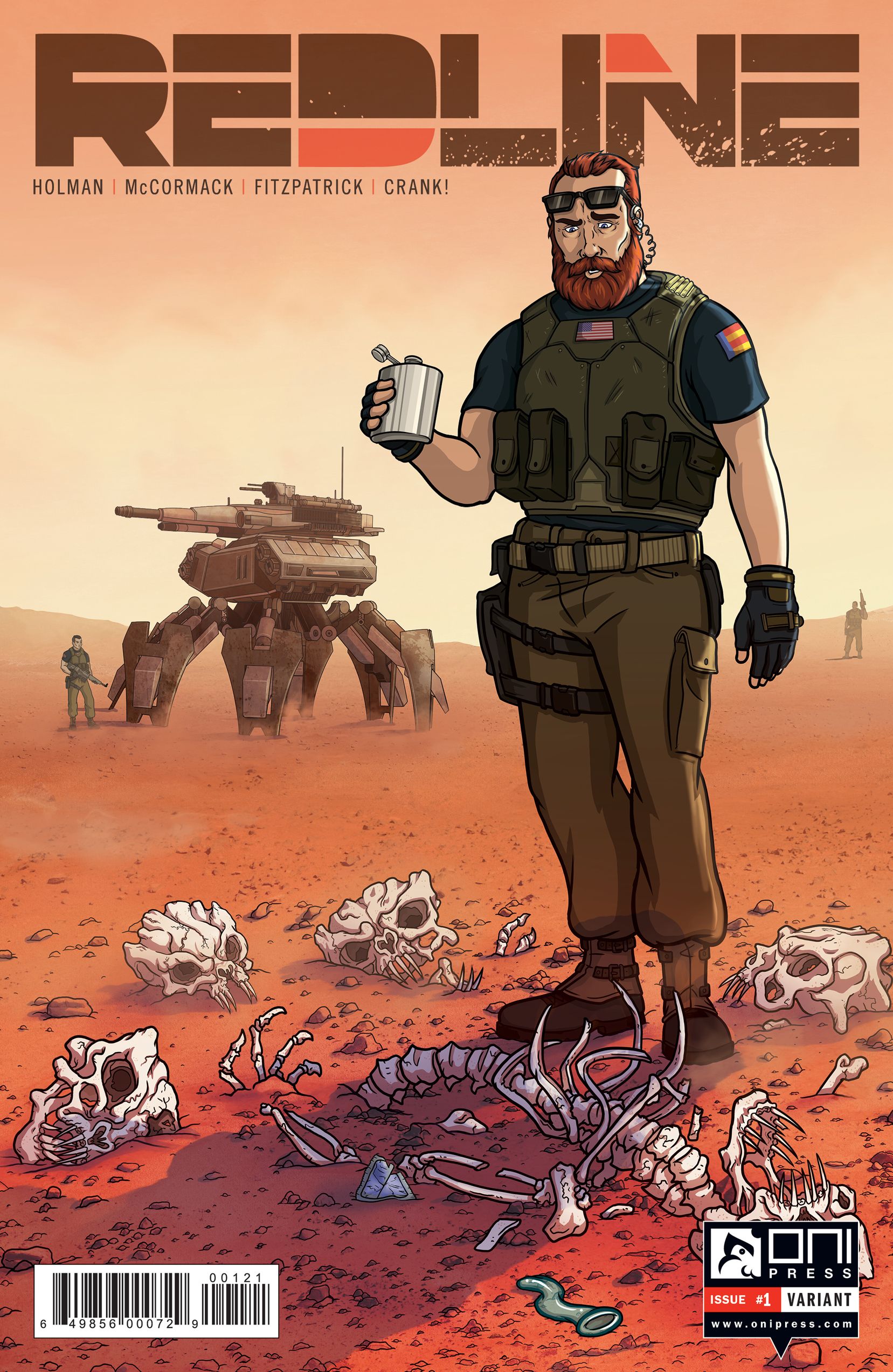"Redline," a new series debuting from Oni Press in March, looks a lot like the news from the past decade: Soldiers sweat in a harsh desert, fighting an unknown enemy, while also having to contend with roadside bombs, media scrutiny and the watchful eyes of angry bureaucrats.
Except the harsh desert is Mars, the unknown enemy isn't human and bleeds sickly, blue blood, and the media attention involves hovering drone cameras. That, and the whole atmosphere of desert heat, death, military hardware, and uncertainty is punctuated by a sardonic sense of humor that laughs in the face of doom on an alien world. Despite the sun-drenched setting, the book is dark, tinged with noir sensibilities and plenty of black comedy.
RELATED: Oni Press’ Solicitations for March 2017
"Redline" comes from a creative team familiar with death, sarcasm and alien worlds. Writer Neal Holman is a comics newcomer but art director and a producer of "Archer," artist Clayton McCormack previously was part of the "Cafe Racer" anthology and colorist Kelly Fitzpatrick helped bring an interstellar prison to life in "Bitch Planet." The three chatted with CBR for the first interview on the series, discussing creating a war zone 20 minutes in the future, depictions of military life and fighting an enemy that's as communicative as a shark.
CBR: How would you describe “Redline?” What's your 30-second summary of the series?
Neal Holman: On its surface, “Redline” is a military noir, following a detective's singular mission to right a wrong. A bomb blows up. The wrong people are blamed. He tries to fix it. Things go awry.
If you take a step back and look at the story from a macro view, there are broader themes of war and human conquest and greed. Plus some jokes. It's fun, you'll love it.
Clayton McCormack: "Redline," to me, is one soldier's really really bad week at work. It's also a mystery with lots of moving parts with wit about as dry as a Mars desert. Neal's right, you'll love it.
"Redline" in obviously very different in tone than “Archer.” But like “Archer,” it's also about non-civilians dealing with violence, war, and the behind-the-scenes world of politics and intrigue. How has working on “Archer” informed or influenced what goes into “Redline?”
Holman: [“Archer” creator] Adam Reed is easily the largest influence on my writing. I've worked with him for 15 years, so he is the bar by which I measure every script. (Which is why I hate all of my scripts.)
I remember in a guideline sheet for freelancers he wrote that "Every line of dialogue should either move the plot forward or be a great joke or preferably, both," and I try to follow that rule of thumb as much as possible.
Any comic about war invites comparisons to the real world. In what ways have you drawn from actual history or current events in creating the conflict in “Redline?” Alternatively, is there anything about real war that you chose to leave out for dramatic effect?
Holman: In college, a billion years ago, I took a course—Colonialism and Imperialism in Art History—that focused on the British Empire (among others) and how it affected even the art we consume today. Studying “Jumanji” in this vein was a pretty big eye opener for me. The course has always stuck with me, and as this story began to take shape, those lessons came bubbling back up. History is rife with conquest and war, subjugation and revolution. Today, yesterday, tomorrow. And that's just with humans against humans.
Now, imagine if we went to another world, with a different population altogether. On one hand, we as humans are finally united, Us vs. Them. On the other, we're doing the same shit we did here, conquest and war with some nice corporate profits to boot. Plus jokes.
I was lucky enough to speak with a few OSI agents about their experiences in various parts of the world, and those interviews informed not only some of the investigative details but also the tone. I am always impressed with those that have to deal with some crazy dark circumstances due to the nature of their jobs and still somehow retain their sense of humor. That gallows humor that cops, nurses, and doctors all have—I think that's integral to telling these stories. Without it, you just get a depressing glum-test of how sad and serious we can be. Bleh. The peaks and valleys of a story matter. Without a laugh here or there, without a smile, the story can falter.
Oh, also, I am 1000 percent certain I got all of the investigative details terribly, terribly wrong. But it's the future, so... I'm right.
McCormack: From an art standpoint, Neal made it clear that this was not a sleek, clean sci-fi story. Things are broken, stuff doesn't work. Sand gets in everything. We felt that even though “Redline” is a science fiction story set in some future where humans have colonized Mars, it needed to feel gritty and relatable, so a lot of the tech designs feel futuristic, but also recognizable as gear not too different from what is currently in use in the military today.
There seems to be a very narrow range of colors going on in “Redline.” What effect are you going for? Also, at a few points in the first issue that narrow range of color is contrasted vividly with bright blue. What's happening there?
Kelly Fitzpatrick: I always try and talk to the team about their thoughts for palettes. I wanted to give it a grainy Matt Hollingsworth-style palette that would emphasize the natural outdoor landscape of Mars and the artificial indoor environments using accent colors (like the blue blood) for impact.
Guessing that there's no shortage of war movies, comics, and TV shows out there. Which ones have been influential regarding “Redline?”
Holman: I have a ton of movie cornerstones for me personally, but for this specific project, the photograph essays in “The Atlantic” were more impactful than any one movie.
McCormack: I actually found myself thinking a lot about Italian Westerns from the '60s -- specifically the way you could totally feel the heat of the deserts in them, grimy, sweaty and barren.
The non-human enemies in “Redline” only make a few brief appearances. Without giving too much away, can you get into what they're all about?
Holman: There is a longer game that I can't get into yet. What I will say is this -- you will be never meet a Worf or a Teal'c, no sympathetic character to give you a new view of their culture. They will always be the unknown. Looking into their eyes tells you as much as looking into those of a shark. You can discern neither malice nor benevolence. Maybe they will walk right by you. Maybe they will rip your son or daughter apart, limb from limb, and wear their intestines as a new belt. You do not know.
Denton Coyle has his views of them. Anya Belikova has hers. We leave it to the reader to make their own.
"Redline" #1 is scheduled for release from Oni Press on March 8.



